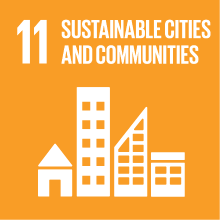ARCHEOLOGY AND THE CULTURES OF GANDHARA AND THE SILK ROADS
- Academic year
- 2023/2024 Syllabus of previous years
- Official course title
- ARCHEOLOGIA E CULTURE DEL GANDHARA E DELLE VIE DELLA SETA
- Course code
- LM2640 (AF:448691 AR:248654)
- Modality
- On campus classes
- ECTS credits
- 6
- Degree level
- Master's Degree Programme (DM270)
- Educational sector code
- L-OR/16
- Period
- 2nd Semester
- Where
- VENEZIA
- Moodle
- Go to Moodle page
Contribution of the course to the overall degree programme goals
The course wished to introduce the students to the problems of archaeology, fine art and material culture from Afghanistan to South and Central Asia from BCE 600 to 1000 CE. The course will have a focus on the early-historic to post-Kushan phases of the Gandharan region (modern Pakistan) (c. 150 BCE- 650 CE).
The course pairs well with LM2580.
Expected learning outcomes
A good understanding of the thematics discussed and related methodologies.
Pre-requirements
Contents
General chronologies for the period considered in a broad sense (approx. 600 BC to 1000 AD).
Monographic subject course: South Asia, c. 500 BCE-100 CE: shrines of local cults and Buddhist appropriation
Topics in the archaeology of religions.1: Buddhist shrines.
The construction of a stupa: from the quarries to the elevation. organisation of the construction site, the workers, the client.
Case study: Saidu Sharif I
Topics in archaeology of religions.2: dynastic sanctuaries.
Case study: Surkh Kotal
Topics in archaeology of religions.3: the Shahi temples
Case study: Barikot, Zalam-kot
Ancient economy: agricultural production and the role of Buddhist monasteries
Case study: The double-crop regions
Themes in the history of Gandharan art: models, contamination and emulation between India and the Mediterranean
Case study: The Frieze of the Master of Saidu
Referral texts
Thematic handouts, research papers (in inglese e/o italiano) and PDF presentations shown in class, will be made available from February 2024 in PDF format on the University platform Moodle
Reference texts:
1) Ciro Lo Muzio (2017) Archeologia dell’Asia Centrale preislamica. Mondadori Università, Milano (ISBN: 9788861844124): Chapters 3, 5, 7 [BAUM: ARCHEO (931 ASIA 125)].
2) Luca M. Olivieri (2022) The Archaeology of Gandhāra. Oxford Research Encyclopaedias: Anthropology https://doi.org/10.1093/acrefore/9780190854584.013.545 (vedi Moodle)
3) Cinzia Pieruccini (2020) L'arte dell'India.1 Dalle origini ai grandi templi medievali, Einaudi, Torino (ISBN: 9788806245955): Chapters II.1, 7-8, III.3-4, IV.1-2, , VI.4
Readings by topic:
Saidu Sharif I
Luca M. Olivieri (2022) Stoneyards and artists in Gandhara. The Buddhist stupa of Saidu Sharif I, Swat (c. 50) open access: https://edizionicafoscari.unive.it/it/edizioni4/libri/978-88-6969-577-3/ (selected Chapters)
Dynastic shrines
Luca M. Olivieri, F. Sinisi (2021) The stele and other statues. A stone puzzle from Surkh Kotal, East and West 2(61), pp. 115-161
Ancient economy
Luca M. Olivieri (2022) The Swat routes, new perspectives. In X. Liu (ed.) The World of the Ancient Silk Road. New York: Routledge, pp. 354-377.
Shahi Temples.
Luca M. Olivieri (2022) The temples of Swat. The Śāhi archaeological landscape of Barikot. In H.P. Ray et al. (eds.) The Routledge Handbook of Hindu Temples Materiality, Social History and Practice. London: Routledge India, pp. 251-276.
Assessment methods
Individual material cataloguing and study exercis es will be conducted on materials uploaded on the ICherish teaching platform.
Before the exam, the candidate will present a short (max. 5000 words in English or Italian) research essay on a topic selected by the candidate that references and cites the texts we have studied.
Type of exam
Teaching methods
The last part of every class will be devoted to actively discuss the main topics.
Individual material cataloguing and study exercises will be conducted on materials uploaded on the ICherish teaching platform.
A short written summary will be requested every 4 lessons.
Before the exam, the candidate will present a short (max. 5000 words in English or Italian) research essay on a topic selected by the candidate that references and cites the texts we have studied.
Teaching language
Further information
2030 Agenda for Sustainable Development Goals
This subject deals with topics related to the macro-area "Cities, infrastructure and social capital" and contributes to the achievement of one or more goals of U. N. Agenda for Sustainable Development


